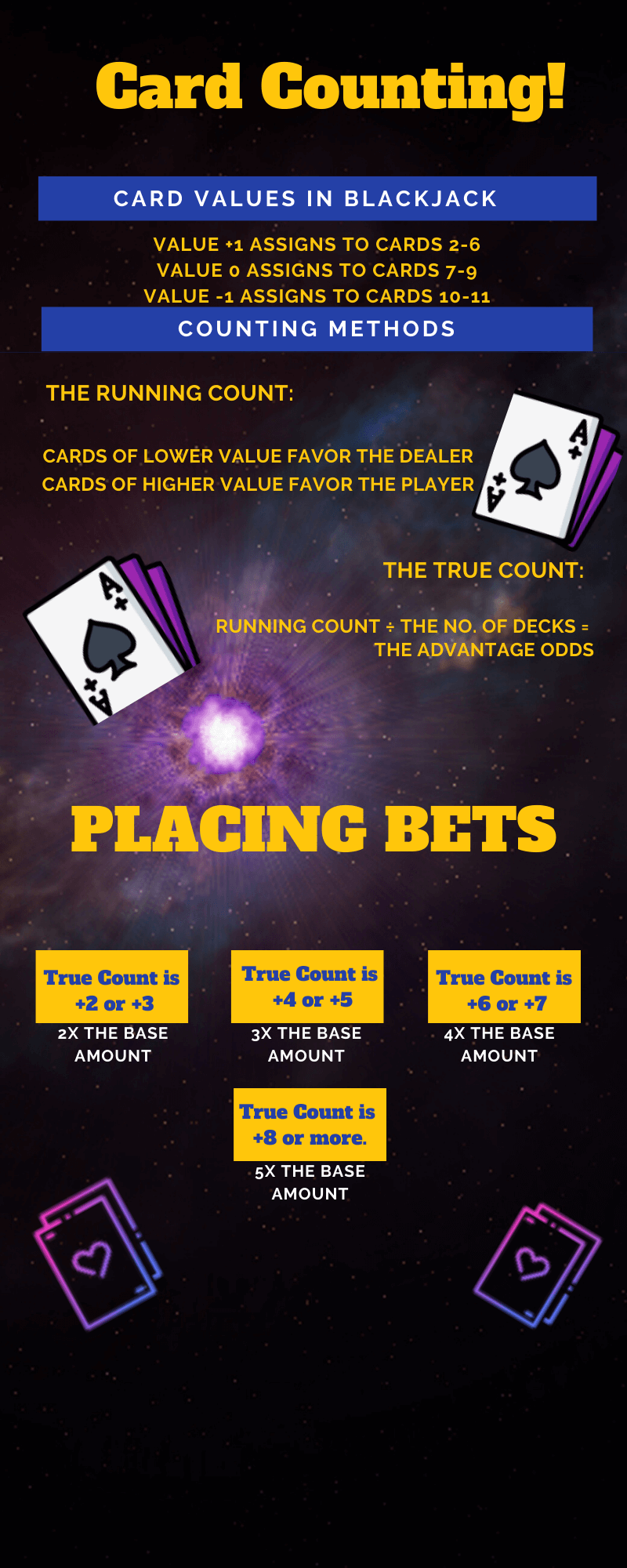 You saw the movie “21” and maybe even read the book “Beat the Dealer”. If so, we bet you tried card counting and already have experienced the level of difficulty in card counting. It is a true skill one can master if practiced regularly. Card counting in Blackjack is today’s topic. For more information on Blackjack basics and tips, browse our blog.
You saw the movie “21” and maybe even read the book “Beat the Dealer”. If so, we bet you tried card counting and already have experienced the level of difficulty in card counting. It is a true skill one can master if practiced regularly. Card counting in Blackjack is today’s topic. For more information on Blackjack basics and tips, browse our blog.
Math as the Basis
The “father” of card counting is Edward Thorp, a mathematician, an author, a hedge fund manager. He is the brain behind the popular technique of card counting in Blackjack, primarily. And with a good reason. As we stated several times before in many of our blog posts, gambling demands skills and techniques as much as it relies on pure luck.
Edward Thorp was thinking much about the house edge vs. the player’s edge, and he came to an interesting conclusion. Namely, he calculated that the player’s edge increases if a single 2 is removed from the deck of 52 cards.
What is Card Counting?
Card counting is nothing more (and nothing less!) than predicting the odds of to which extent the next card to be dealt favors either the dealer or the player. Players who count cards do this by keeping track of high-and-low-value cards. Consequently, when a player assesses that the next card to be dealt favors his or her hand, a player increases the bet. In case the assessment favors the dealer’s hand, a player can opt out, for example.
Assigning Values to Cards
The first thing a player should do is assign values to cards. Cards 2 to 6 get assigned value of 1. Cards 7 to 9 have zero as assigned value. The 10s and 11 have assigned value of -1. Next, every time the card comes out of the shoe, a player needs to either add 1, subtract 1 or do nothing depending on card that comes out.
The Running Count
Secondly, players should keep score of each card, and every round until the next shuffling. This is called “The Running Count”. Cards with lower values always favor the dealer. On the other hand, high value cards increase the player’s odds.
The True Count
The Running Count applies to every deck. However, in order to apply it to every deck, a player needs to divide the running count by the number of remaining decks. This is called “True Count”. For example, if the Running Count is 10, and there are 5 decks remaining, the True Count is 2 (10 ÷ 5). This means that the player’s edge increases by half percent.
The Edge and the Bets
If you have read carefully the text so far, you could conclude logically that the higher the True Count is, the bigger the player’s edge. You will mostly see the 6 deck Blackjack game. In this game, each point in True Count increases the player’s edge by 0.5%.
Upon shuffle, the Running Count is 0, and dealer’s edge is 0.5%. The odds become even when the True Count reaches +1, and so forth. What does it mean for the bets you should place?
Generally speaking, card counting is not a betting system. However, there are some widely accepted rules to what a player should do with his or her bets when applying card counting. So, here they are:
You should bet your base amount if a True Count is +1 or less.
Betting 2x the base amount is recommended when True Count is +2 or +3. When the True Count is +4 or +5, your bet should be 3x the base amount. If the True Count comes to +6 or +7, betting 4x the base amount is recommended. A player should bet 5x the base amount when the True Count reaches +8 or exceeds it.
Do you count cards? Share your experience with us.

